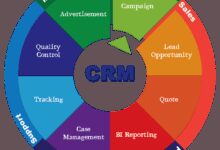B2B Website: 7 Powerful Strategies to Dominate Your Industry
In today’s digital-first economy, a powerful B2B website isn’t just a luxury—it’s a necessity. Whether you’re selling software, manufacturing equipment, or consulting services, your website is the frontline of your business. Let’s explore how to build a B2B website that converts, engages, and scales.
1. Understanding the Core Purpose of a B2B Website

A B2B website serves a fundamentally different role than its B2C counterpart. While B2C sites often focus on impulse buys and emotional triggers, a B2B website is built for logic, trust, and long-term relationships. It’s not just a digital brochure—it’s a strategic asset that drives lead generation, nurtures prospects, and supports sales cycles that can span weeks or even months.
Lead Generation Engine
One of the primary functions of a B2B website is to generate qualified leads. Unlike B2C, where a purchase decision might be made in minutes, B2B buying decisions involve multiple stakeholders, extensive research, and a need for detailed information. Your website must be equipped with tools like contact forms, demo requests, whitepaper downloads, and newsletter sign-ups to capture leads at various stages of the buyer’s journey.
- Use gated content (e.g., case studies, industry reports) to collect contact information.
- Implement live chat or AI-powered chatbots to engage visitors in real time.
- Integrate CRM systems like Salesforce or HubSpot to automate lead tracking.
Establishing Credibility and Trust
Trust is the cornerstone of B2B relationships. A professional, well-designed B2B website signals credibility. Elements like client logos, testimonials, case studies, and certifications help build confidence in your brand. According to Forrester Research, 74% of B2B buyers conduct more than half of their research online before making a purchase.
- Showcase success stories with measurable results (e.g., “Increased client ROI by 150%”).
- Display trust badges, security certifications, and industry affiliations.
- Include an ‘About Us’ page that highlights your team, mission, and values.
“Your website is often the first impression a potential client has of your company. Make it count.” — Neil Patel, Digital Marketing Expert
2. Key Elements of a High-Performing B2B Website
A successful B2B website isn’t just about aesthetics—it’s about functionality, clarity, and user experience. Every element should serve a strategic purpose, guiding visitors toward conversion. Let’s break down the essential components that make a B2B website effective.
Clear Value Proposition Above the Fold
The moment a visitor lands on your homepage, they should instantly understand what you do and how you help. Your value proposition should be concise, benefit-driven, and tailored to your target audience. Avoid jargon and focus on outcomes.
- Example: “Streamline your supply chain with AI-powered logistics solutions.”
- Use strong visuals or short videos to reinforce the message.
- Include a primary call-to-action (CTA) like “Request a Demo” or “Talk to an Expert.”
Comprehensive Product or Service Pages
Unlike B2C, B2B buyers need in-depth information before making a decision. Your product or service pages should go beyond features—they should explain benefits, use cases, integration capabilities, and pricing models.
- Use comparison charts to differentiate your offerings from competitors.
- Include technical specifications, API documentation, or integration guides.
- Embed customer testimonials or video walkthroughs to build trust.
Robust Resource Center
A resource center (or knowledge hub) is a critical component of any B2B website. It positions your company as a thought leader and provides value to prospects at every stage of the buyer’s journey.
- Host whitepapers, eBooks, webinars, and industry reports.
- Offer downloadable templates or tools (e.g., ROI calculators).
- Regularly update with blog posts on industry trends and best practices.
3. Design Principles for a Professional B2B Website
Design plays a pivotal role in how your B2B website is perceived. A cluttered, outdated, or confusing layout can drive potential clients away. On the other hand, a clean, modern, and intuitive design enhances credibility and user engagement.
Minimalist and Professional Aesthetic
B2B audiences value professionalism over flashy design. A minimalist approach with ample white space, consistent typography, and a cohesive color scheme creates a sense of reliability and sophistication.
- Stick to a maximum of three primary colors that align with your brand.
- Use high-quality images of your team, office, or product in action.
- Avoid excessive animations or pop-ups that distract from core content.
Mobile Responsiveness and Accessibility
Over 50% of B2B research is now conducted on mobile devices. A B2B website must be fully responsive, ensuring seamless navigation across smartphones, tablets, and desktops. Additionally, accessibility compliance (e.g., WCAG standards) ensures inclusivity and broadens your reach.
- Test your site on multiple devices and screen sizes.
- Use alt text for images and proper heading structures for screen readers.
- Ensure fast load times—Google recommends under 3 seconds.
Intuitive Navigation and Information Architecture
A well-structured B2B website makes it easy for visitors to find what they’re looking for. Use clear menu labels, a logical hierarchy, and a search function to enhance usability.
- Limit top-level menu items to 5–7 (e.g., Solutions, Industries, Resources, About, Contact).
- Use breadcrumbs for multi-level pages.
- Include a sitemap for both users and search engines.
4. Optimizing Your B2B Website for Search Engines (SEO)
Even the most beautifully designed B2B website won’t succeed if no one can find it. Search engine optimization (SEO) is essential for driving organic traffic and increasing visibility in a competitive market.
Keyword Research for B2B Audiences
B2B buyers use specific, long-tail keywords when researching solutions. Tools like Ahrefs or SEMrush can help identify high-intent keywords such as “enterprise CRM software for mid-sized businesses” or “cloud-based ERP solutions.”
- Focus on informational and commercial intent keywords.
- Target industry-specific terms and pain points.
- Optimize for local SEO if you serve regional markets.
On-Page SEO Best Practices
Each page of your B2B website should be optimized for both users and search engines. This includes title tags, meta descriptions, header tags, and keyword placement.
- Include your focus keyword (e.g., ‘b2b website’) in the H1 and first paragraph.
- Write compelling meta descriptions under 160 characters.
- Use internal linking to guide users to related content.
Technical SEO for B2B Platforms
Technical SEO ensures that search engines can crawl and index your site efficiently. This is especially important for large B2B websites with complex structures.
- Fix broken links and redirect 404 errors.
- Optimize site speed using tools like Google PageSpeed Insights.
- Implement structured data (schema markup) for products, services, and FAQs.
5. Integrating Marketing Automation and CRM Tools
A B2B website should not operate in isolation. It must be integrated with marketing automation and customer relationship management (CRM) systems to streamline lead nurturing and sales processes.
Email Marketing Integration
Email remains one of the most effective channels for B2B communication. By integrating your B2B website with platforms like Mailchimp or Constant Contact, you can automate follow-ups, send personalized content, and segment leads based on behavior.
- Use pop-ups or slide-ins to capture emails with lead magnets.
- Set up drip campaigns for new subscribers.
- Track open rates, click-through rates, and conversions.
CRM and Lead Scoring Systems
Integrating your website with a CRM like Zoho CRM or Pipedrive allows you to track lead interactions, assign scores, and prioritize high-value prospects.
- Automatically log form submissions and page visits.
- Use lead scoring to identify sales-ready leads.
- Sync data between marketing and sales teams for better alignment.
Analytics and Conversion Tracking
Understanding user behavior is critical for optimizing your B2B website. Tools like Google Analytics and Hotjar provide insights into how visitors interact with your site.
- Set up goals to track form submissions, downloads, and demo requests.
- Use heatmaps to see where users click, scroll, or drop off.
- Conduct A/B testing on CTAs, headlines, and layouts.
6. Content Strategy for a B2B Website
Content is the fuel that powers a B2B website. From blog posts to case studies, every piece of content should educate, engage, and move prospects closer to a purchase decision.
Blogging for Thought Leadership
A consistent blog helps establish your brand as an industry authority. Focus on topics that address customer pain points, industry trends, and solution comparisons.
- Publish at least 2–4 articles per month.
- Use data-driven insights and original research.
- Promote blog content on LinkedIn and other professional networks.
Case Studies and Customer Success Stories
Nothing builds trust faster than real-world proof. Case studies demonstrate how your product or service solved a specific problem for a client.
- Structure case studies with challenge, solution, and results.
- Include quotes from client stakeholders.
- Use visuals like before-and-after metrics or project timelines.
Video Content and Webinars
Video is increasingly important in B2B marketing. Product demos, explainer videos, and live webinars can significantly boost engagement and understanding.
- Create short (2–3 minute) videos for social sharing.
- Host quarterly webinars on trending industry topics.
- Embed videos directly on product and landing pages.
7. Measuring Success: KPIs for Your B2B Website
Building a B2B website is just the beginning. To ensure long-term success, you must continuously measure performance and make data-driven improvements.
Lead Conversion Rate
This metric measures the percentage of website visitors who become leads (e.g., by filling out a form). A high conversion rate indicates effective messaging and user experience.
- Industry average: 5–10% for B2B websites.
- Optimize landing pages to improve conversion rates.
- Use A/B testing to refine CTAs and form fields.
Customer Acquisition Cost (CAC)
CAC measures how much it costs to acquire a new customer through your website. Lower CAC means your marketing efforts are efficient.
- Calculate CAC by dividing total marketing spend by new customers acquired.
- Compare CAC to customer lifetime value (LTV) for profitability analysis.
- Optimize ad spend and content strategy to reduce CAC.
Time on Site and Bounce Rate
These engagement metrics reveal how compelling your content is. A high bounce rate (over 60%) may indicate poor relevance or usability.
- Aim for an average session duration of 3+ minutes.
- Reduce bounce rate by improving page load speed and content quality.
- Use exit-intent pop-ups to re-engage leaving visitors.
What is the primary goal of a B2B website?
The primary goal of a B2B website is to generate qualified leads, establish brand credibility, and support the sales process by providing valuable information to decision-makers.
How is a B2B website different from a B2C website?
A B2B website focuses on logic, detailed information, and long sales cycles, while a B2C website emphasizes emotion, simplicity, and quick purchases. B2B sites often include complex product details, case studies, and enterprise pricing.
What are the essential pages every B2B website should have?
Every B2B website should include a homepage with a clear value proposition, product/service pages, a resource center, case studies, an about us page, and a contact page with multiple communication options.
How important is SEO for a B2B website?
SEO is critical for a B2B website because most buyers begin their journey with online research. Ranking high for industry-specific keywords increases visibility, drives organic traffic, and builds authority.
Can a small B2B company benefit from a professional website?
Absolutely. A professional B2B website levels the playing field, allowing small companies to compete with larger players by showcasing expertise, building trust, and generating leads online.
A powerful B2B website is more than just a digital presence—it’s a strategic growth engine. From clear messaging and SEO optimization to lead capture and analytics, every element must work together to attract, engage, and convert high-value clients. By following the strategies outlined in this guide, you can build a B2B website that not only looks professional but delivers real business results. The digital landscape is evolving, and your website must evolve with it. Start building, optimizing, and measuring today to stay ahead of the competition.
Further Reading:









